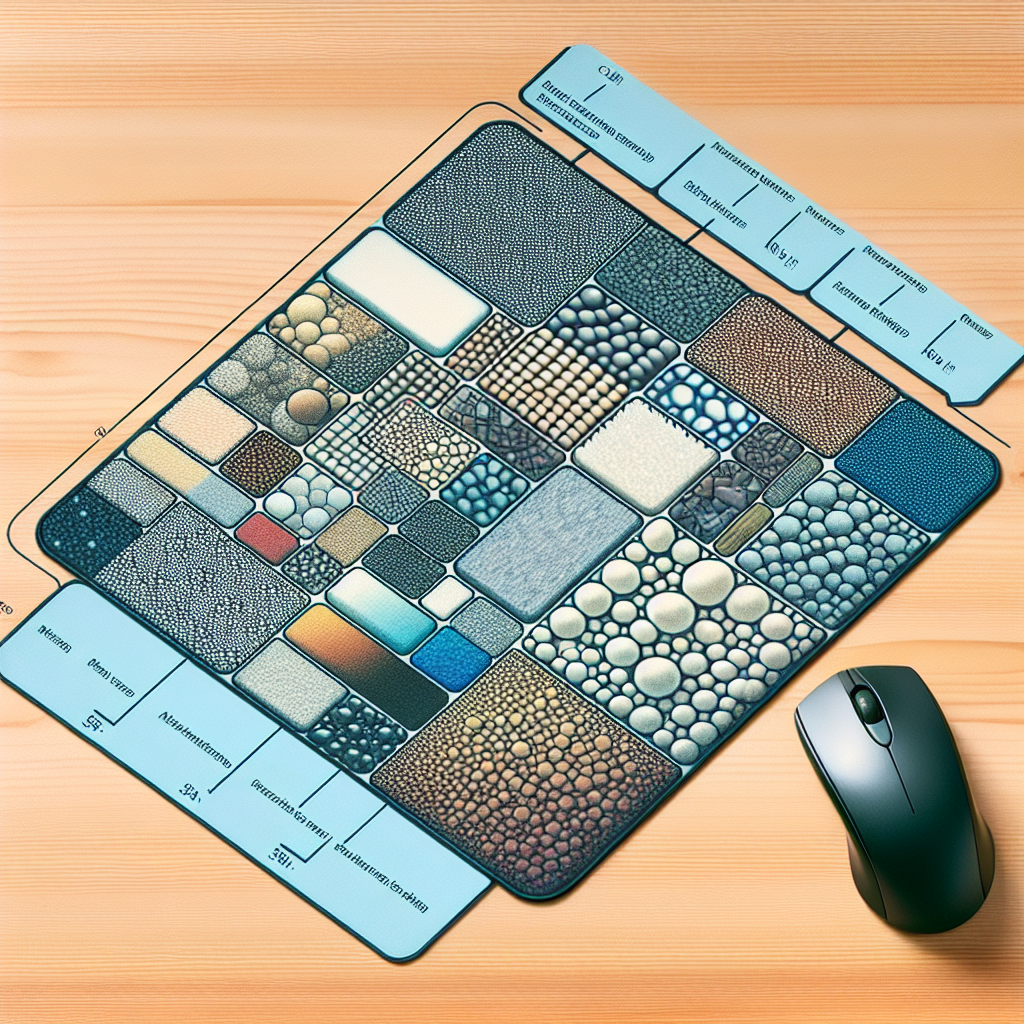Choosing the right mouse pad can significantly enhance your productivity and gaming experience. The surface of your mouse pad influences the precision of your mouse, the feel of scrolling, and overall comfort during long usage hours. This article discusses the different materials used for mouse pads, highlighting their unique characteristics, benefits, and drawbacks.
| Material | Surface Type | Best For | Durability | Price Range |
|---|---|---|---|---|
| Cloth | Soft, textured | Casual use, gaming | Medium | $10 – $30 |
| Plastic | Hard, smooth | Gaming, professional design | High | $15 – $50 |
| Aluminum | Hard, smooth | Professional use, durability | Very High | $30 – $80 |
| Glass | Smooth, sleek | High-end gaming, aesthetics | Very High | $40 – $100 |
| Rubber | Soft, grippy | Everyday use, portability | Medium to High | $5 – $20 |
Types of Mouse Pad Materials
Mouse pads come in a variety of materials, each providing different levels of comfort and usability:
- Cloth Mouse Pads: These are the most common types of mouse pads made of fabric. They typically offer a soft surface and are ideal for both everyday use and gaming. Cloth pads offer great traction, allowing for customized control. However, they can be less durable over time, especially if regularly washed.
- Plastic Mouse Pads: These mouse pads are usually made from materials like PVC or polyethylene. They provide a smoother surface than cloth pads and are easier to clean. These pads are preferred by many gamers who require precision and speed, but they can feel harsh on the wrist compared to fabric alternatives.
- Aluminum Mouse Pads: Known for their durability and unique design, aluminum pads are a great choice for professionals who need longevity and a stylish appearance. They offer a smooth gliding experience and are easy to clean, but can be cold to the touch and may require special mouse settings for optimal use.
- Glass Mouse Pads: These luxurious mouse pads are engineered for a sleek aesthetic and a unique feel. They provide an ultra-smooth surface for speed, but may not be the best choice for those prioritizing grip or comfort over aesthetics.
- Rubber Mouse Pads: Often very affordable, rubber pads offer a soft surface with a grippy underside to prevent slipping. While they may not offer the same performance as other materials, they are a suitable option for casual users and offer great portability.
Factors to Consider When Choosing a Mouse Pad
1. Surface Texture
The texture of the mouse pad’s surface influences how your mouse interacts with it. Rough textures provide more control, which is essential for precision tasks, while smooth textures allow for faster movements.
2. Size and Thickness
Mouse pads come in varying sizes and thicknesses. Larger pads can accommodate broader movements and multiple devices, while thinner pads offer increased portability. Consider your workspace and how much room you’ll need.
3. Comfort
Using a mouse pad that feels comfortable under your wrist and hand can drastically reduce fatigue during long sessions. Many pads also come with wrist rests to enhance ergonomics.
4. Durability
The longevity of a mouse pad depends on the material it is made from. For instance, cloth pads may fray sooner than aluminum or glass alternatives. If you use your mouse frequently, it may be worthwhile to invest in a higher-quality pad.
5. Aesthetics
Appearance matters, especially if you’re setting up a dedicated workspace or gaming station. Mouse pads come in multiple colors and designs that can match your style.
Cleaning and Maintenance of Mouse Pads
Proper care extends the life of your mouse pad:
- Cloth Pads: Can often be hand washed with mild soap. Avoid harsh chemicals and ensure they are dry before use.
- Plastic and Aluminum Pads: Wipe clean with a damp cloth and a bit of mild detergent.
- Glass Pads: Use a glass cleaner and a soft cloth to avoid scratches.
- Rubber Pads: Clean with a damp cloth, similar to plastic.
Conclusion
Ultimately, the best material for a mouse pad depends on your personal preferences and usage scenarios. Cloth pads are versatile and comfortable, plastic pads excel in gaming, while aluminum and glass options offer durability and style. Take into consideration the factors of texture, size, comfort, durability, and aesthetics to find the perfect match for your needs.

